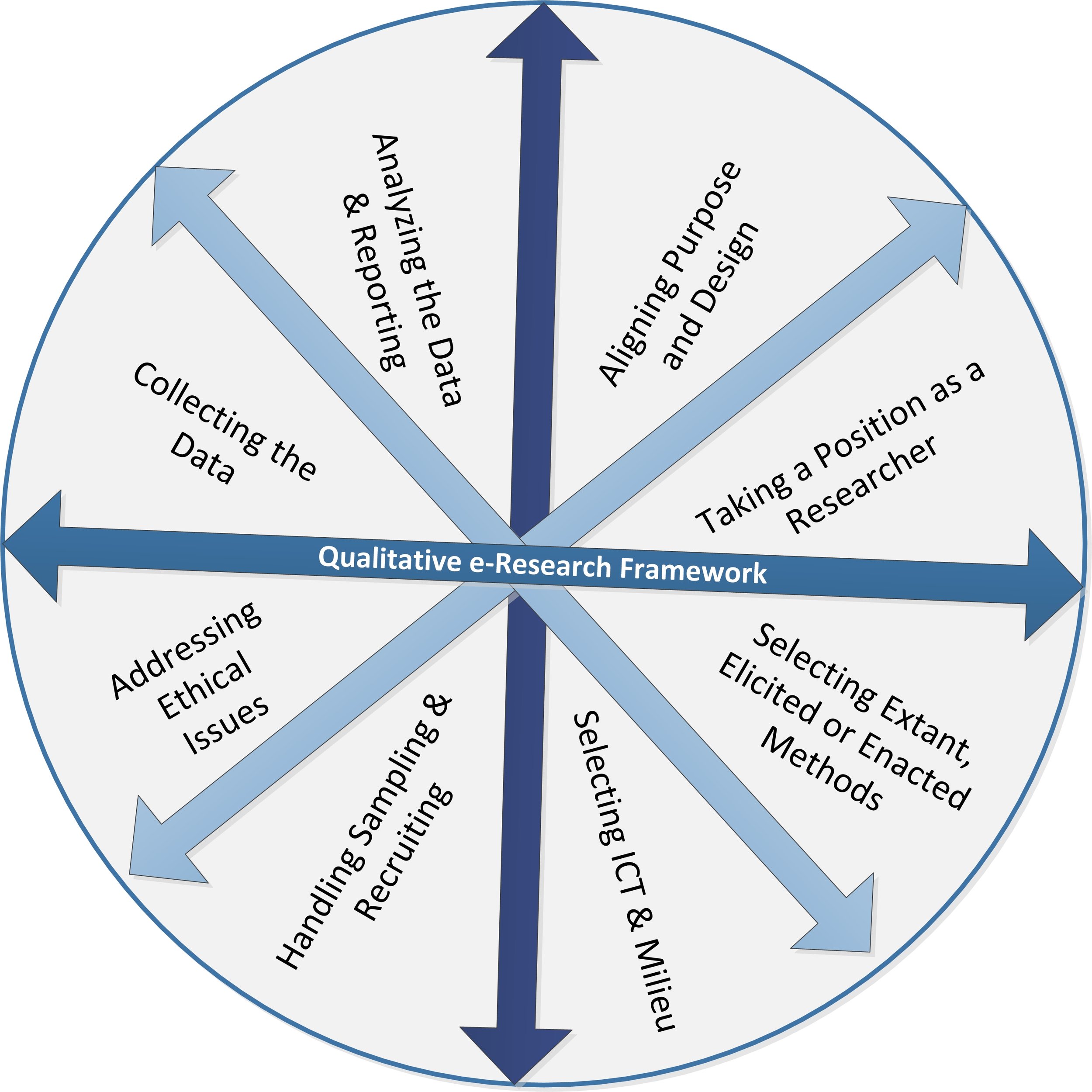Digital Workflows: Special Issue Roundtable 1
Interested in online research? Register now for a May 2024 webinar, “How to do research in a digital world,” livestreamed from the Center for Advanced Internet Studies with Janet Salmons, CAIS fellow, and other researchers from the center.
by Janet Salmons, PhD Manager, Sage Research Community
Dr. Salmons is the author of Doing Qualitative Research Online (2022).
How do you design, organize, and manage qualitative research using online tools and applications?
Jessica Lester and Trena Paulus co-authored the book Doing Qualitative Research in a Digital World (2021). They co-edited a December 2023 special issue for the Sage journal, Qualitative Inquiry, “Qualitative inquiry in the 20/20s: Exploring methodological consequences of digital research workflows.”
This special issue focuses on the reciprocal relationship between the digital tools and spaces that we use and the methodologies and methods that we take up in designing and carrying out a qualitative research study.
In addition to reading this excellent collection of articles, you can also listen to the contributors discuss their research, trends, issues, and design considerations.
Here is the first of two roundtable discussions. See the second roundtable here.
Digital Workflows: A roundtable discussion with contributors to the special issue
Roundtable Participants and Their Articles
Susan Naomi Nordstrom
Author of “Good, Bad, and Hopefully Not the God Trick: Technological Systems in Qualitative Inquiry.”
Abstract: This article is a tangle of threads made possible by theoretical and practical snags in my work with qualitative inquiry technology. One snag pulls at the term “technology” and its etymology to think about technology as a creative system used in the production of knowledge. That snag leads to a study of early anthropological work and technology to better understand the history that feeds into qualitative inquiry. And another snag considers who and what is involved in the making of technological tools used in research. These unraveling snags entangle together to consider technology as an open-ended system consisting of a variety of tools used to create political, cultural, and social realities. Such thinking offers a space to contemplate how technological advances have shaped qualitative inquiry’s past, present, and future. The forceful snags studied in this article begin to ask the question, “Can we think of qualitative inquiry without technology?”Shannon A. B. Perry
Author of “Embodying Affective Intra-Actions Online: Enacting Posthuman Methods in Virtual Spaces.”
Abstract: This article explores how the posthuman concepts of affect, intra-action, and diffraction helped me reimagine collaborative inquiry, a traditionally place-based action research method that emphasizes human affect as the root of all personal becoming, for an online context and posthuman world. I begin with a brief introduction to posthuman philosophies and the ways a 21st-century world increasingly mediated by digital technologies may be considered a shared posthuman present reality. Next, I look to the literature to show how scholars in digital contexts have used and created posthuman concepts, exploring some of the methodological implications of emerging posthuman perspectives for qualitative research, particularly in online spaces. Considering the insights various posthuman studies offer my attempts to design a virtual collaborative inquiry, I suggest an artful and embodied heuristic for starting from human experience to better understand and to create digital posthuman worlds.Darcy E. Furlong
Author of “Enabling Crip Time With Digital Tools in Qualitative Inquiry.”
Abstract: Grounded in the intersectional principles of disability justice, this article attends to the integration of digital tools in qualitative inquiry. With a focus on the unique temporal landscapes of Disabled people, I suggest ways that digital tools can foster a more equitable, accessible, and just inquiry experience. Using personal accounts from two digital tools, I highlight the relationship between crip time and digital tools at the sites of (a) video conferencing platforms, and (b) qualitative data analysis software. This is balanced alongside scholarly debates about access friction (i.e., accommodations are not universal or stagnant) and the digital divide.Luc S. Cousineau
Co-author of “Methodology in Motion: Reflections on Using Appnography for the Study of Dating Apps.”
Abstract: This article reflects upon and provides updates to appnography as a methodology for the study of dating digital app culture. Based on empirical fieldwork and in-depth nterviews with members of the research team, we re-assess and re-map appnography’s original five methodological considerations—digital versus “real,” profiles, space, place, and community, contextualization, and temporality—along two axes: design considerations and user considerations. We also add a third methodological axis, researcher considerations, to the methodological features of appnography and expound on its related concerns of participant recruitment and technological familiarity. With this reformulation, we believe appnography offers an even more robust means of bridging the ethnographic and the technological in qualitative research on apps and their use.
See the second roundtable with more authors!
The second roundtable includes Pengfei Zhao and Peiwei Li, co-authors of “The Affordances of Videoconferencing Technology for Doing Interviews With Children Online: Methodological Explorations Based on a Critical Ethnography,” Vivek Vellanki author, “Image Technologies and Visual Methodologies: Reflections, Experimentations, and Future Redirections,” and Pengfei Zhao and Jessica Lester, co-authors of “Digital Worlds and Our Folding Realities: Implications for Qualitative Inquiry.”































Do you think about research questions as an insider, outsider, or somewhere in between? Why is positionality important in online research?